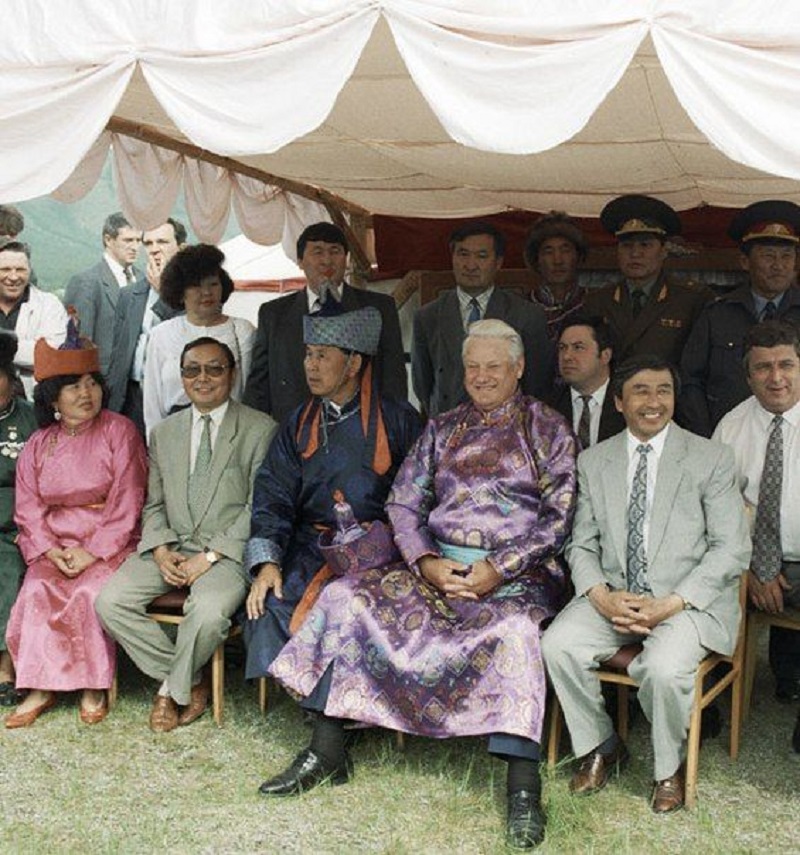"Today we are creating the Lublin Triangle, a format that will be an important element in the development and strengthening of Central Europe, but also in strengthening Ukraine as a full member of the European and Euro-Atlantic family,"Kuleba said at a joint press conference.Cooperation between the three countries will not be limited to defense issues, such as the joint LitPolUkrbrig brigade active since 2014, but will also include strengthening economic cooperation, trade, and tourism. According to an announcement on the website of the Ukrainian MFA, the new tripartite format is based on the traditions and historical ties of the three countries, whose roots go back to many centuries and is an important mechanism for strengthening Central Europe and promoting Ukraine's European and Euroatlantic integration.
"Ukraine constantly tries to join some existing formats - the Visegrad Four, the Bucharest Nine, the Three Seas, the EU and NATO. But I believe that Ukraine should not only aspire to join something already created by somebody but be creative ourselves, engage in central European affairs... This is yet another step of Ukraine to Europe, a return into the European family of nations," Kuleba said in a video address on his Facebook page.He added that joint efforts to fight Russian disinformation and advocacy of Ukraine's Euro-Atlantic perspectives could be among the first projects of the cooperation. Additionally, the participants in the format agreed to coordinate actions to protect international law in the context of Russia's ongoing aggression against Ukraine both in tripartite coordination and in international organizations: NATO, the UN, the EU, the Council of Europe, and the OSCE; as well, trade, investment, and infrastructure projects will be developed, according to a statement published by the MFA. A joint declaration on the creation of the Lublin triangle stressed the importance of intensifying the cooperation between the EU, NATO, and the Eastern Partnership and paying special attention to the development of the Three Seas Initiative. The countries of the format support Ukraine’s cooperation with the Three Seas and other regional formats of cooperation. Among other priorities named in the declaration is support for Ukraine's territorial integrity and aspirations to NATO membership, the next step towards which should be providing Ukraine with a NATO Membership Action Plan.
This is the first central European alliance that Ukraine has become a part of. Other Central European regional cooperation initiatives include:
The Visegrad Four - a cultural and political alliance of EU and NATO members Czech Republic, Hungary, Poland, and Slovakia for the purposes of advancing military, cultural, economic and energy cooperation with one another along with furthering their integration in the EU.
The Bucharest Nine brings together nine countries of the NATO Eastern flank - Poland, Bulgaria, the Czech Republic, Estonia, Hungary, Latvia, Lithuania, Romania, and Slovakia. The B9 format was launched in 2015 in response to the Russian aggression in Ukraine in 2014. Regular meetings held at various levels aim to highlight the defense and deterrence needs of the NATO Eastern flank countries and to discuss pressing matters of their security policy.
The Three Seas initiative is a forum of twelve EU states along a north-south axis from the Baltic Sea to the Adriatic Sea and the Black Sea in Central and Eastern Europe. The Initiative aims to create an intermarium-based regional dialogue on various questions affecting the member states.
Memories of the Polish-Lithuanian Commonwealth

"The alliance of our three countries is not only rooted in antiquity. Our interaction has the dimension of the Parliamentary Assembly Poland-Lithuania-Ukraine, as well as a joint military unit, the Ukrainian-Polish-Lithuanian Brigade. The Lublin Triangle is based on this historical, parliamentary, and security foundation,” Dmytro Kuleba commented.Ukraine's Foreign Minister is referring to the Polish-Lithuanian Commonwealth, one of the most populous and largest European states of the 16-17th centuries. After the medieval kingdom of Kyivan Rus fell under the attacks of the Tatar-Mogol hordes, the territory of modern Ukraine was drawn into the Grand Duchy of Lithuania, which in 1569 united with the Crown of the Kingdom of Poland in Lublin (the very city where the "Lublin Triangle" was formed), forming the Polish–Lithuanian Commonwealth, an elective monarchy which scholars sometimes term "a composite republic of the nobles." It lasted until 1795, collapsing with the Third Partition of Poland.


Trending Now

Read also:
- Ukraine “forming new military ‘troika’ with Lithuania and Poland”
- Intermarium countries becoming Ukraine’s main advocates, Portnikov says
- Intermarium countries can no longer count on West to defend them against Russia, Honcharenko says
- Eastern Europe arming itself because ‘no one wants to be the next Ukraine’
- Ukraine, the Gates of Europe of the last millennia, and their meaning for Russia – Serhii Plokhy explains



![A "Pussy for Putin": In 2010, 17-year old Alisa Kharcheva in a group with other 11 students and would-be students of Moscow State University starred in an erotic calendar for Putin's 58th birthday as Miss April. In 2012, Kharcheva posted these photographs with a cat and Putin portraits in a personal blog post entitled "Pussy for Putin." Then she sent a formal notice to Putin’s office and posted her phone number on her LiveJournal entry just in case. “Until Vladimir Vladimirovich decides to pick up his [birthday] gift, the kitty will live with me,” she wrote. According to Reuters, in 2015, a business associate of Arkady Rotenberg, a close friend of Putin, transferred into her possession an apartment in a smart gated complex in a desirable part of Moscow. She was 23 at the time. (Image: Alisa Kharcheva)](https://euromaidanpress.com/wp-content/uploads/2017/01/Kharcheva_0411.jpg)

